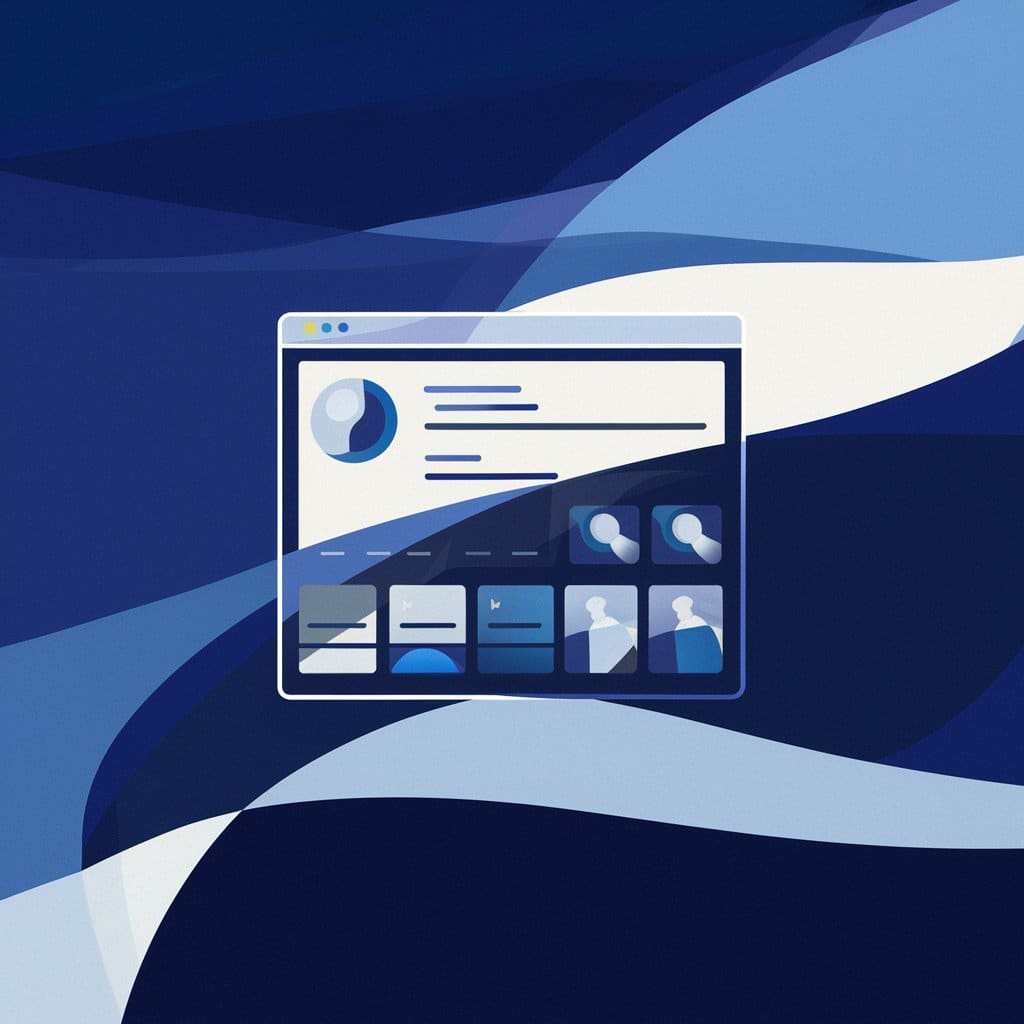Web design is an essential aspect of creating a successful website. It involves the planning, creation, and maintenance of a website’s layout, content, and user experience. A well-designed website can help businesses to establish credibility, attract customers, and increase sales.
The importance of web design lies in its ability to create a positive user experience. A well-designed website is easy to navigate, aesthetically pleasing, and provides users with the information they need quickly and efficiently. This can lead to increased user engagement, improved conversion rates, and ultimately, increased revenue for businesses.
Additionally, web design can help businesses to establish their brand identity and differentiate themselves from competitors. A website’s design can convey a company’s values, personality, and unique selling proposition. This can help businesses to build trust and loyalty with their customers, which can lead to long-term relationships and increased customer lifetime value.
The Importance of Web Design

A good web design can make all the difference in the world when it comes to the success of a website but what makes web design so important. A website that is visually appealing and easy to navigate can help to build trust with potential customers and keep them engaged. In this section, we will explore the importance of web design, including the key factors that contribute to a successful website.
First Impressions
A website’s design is the first thing that visitors will notice, and it can have a significant impact on their first impression of the business. A professional and well-designed website can help to build credibility and trust with potential customers. On the other hand, a poorly designed website can make a business appear unprofessional and untrustworthy.
User Experience (Ux)
User experience (UX) is a critical factor in web design. A website that is easy to navigate and provides a positive user experience can help to keep visitors engaged and increase the chances of converting them into customers. A good UX design should take into account the needs and preferences of the target audience, including the layout, content, and functionality of the website.
Website Navigation
Website navigation is another essential factor in web design. A well-structured and intuitive navigation system can help visitors to find the information they are looking for quickly and easily. This can help to keep visitors engaged and reduce the bounce rate of the website.
Loading Speed
The loading speed of a website is a critical factor that can impact the user experience. A website that takes too long to load can frustrate visitors and lead to a high bounce rate. A good web design should take into account the loading speed of the website and ensure that it is optimized for quick loading times.
Mobile Responsive
With more and more people accessing the internet on mobile devices, a mobile-responsive website is essential for any business. A good web design should ensure that the website is optimized for mobile devices, including smartphones and tablets. This can help to improve the user experience and increase engagement.
SEO and Ranking
Search engine optimisation (SEO) is another critical factor in web design. A good web design should take into account the best practices for SEO, including the use of quality content, relevant keywords, and meta tags. This can help to improve the website’s ranking on search engines and increase visibility.
In conclusion, a good web design is essential for any business looking to build a successful online presence. By taking into account the key factors outlined in this section, businesses can create a website that is visually appealing, easy to navigate, and optimized for the best user experience.
Web Design Elements
Good web design is more than just aesthetics; it is about creating a user-friendly experience that is easy to navigate and visually appealing. There are several elements that make up a well-designed website, including typography, colour schemes, balance and hierarchy, white space and contrast, icons and graphics.

Typography
Typography is the art of arranging type to make written language legible, readable and appealing when displayed. It is an essential element in web design as it can influence the mood and tone of a website. The use of different fonts, sizes, and colours can help to create a hierarchy of content and guide the user’s eye to the most important information.
Colour Schemes
Colour schemes are crucial in web design as they can evoke emotions and set the tone for a website. A well-chosen colour palette can help to create a cohesive and professional look. It is important to consider the contrast between colours, as well as the accessibility of the website for colour-blind users.
Balance and Hierarchy
Balance and hierarchy are important elements in web design as they help to create a visual hierarchy of information. A well-balanced website has an equal distribution of weight, making it easier for the user to navigate. Hierarchy is created through the use of font size, colour, and placement, making it clear to the user what is most important on the page.
White Space and Contrast
White space and contrast are essential elements in web design as they help to create a clean and uncluttered look. White space is the empty space between design elements, and it can help to create a sense of balance and harmony. Contrast is created through the use of colour and size, making it easier for the user to distinguish between different elements on the page.
Icons and Graphics
Icons and graphics are important in web design as they can help to convey information quickly and effectively. They can also help to break up text and add visual interest to a page. It is important to use high-quality graphics and icons that are consistent with the overall look and feel of the website.
In conclusion, a well-designed website is one that considers all of these elements and creates a cohesive and user-friendly experience. By paying attention to typography, colour schemes, balance and hierarchy, white space and contrast, icons and graphics, designers can create a website that is both visually appealing and easy to use.
The Role of Web Design in Branding
Web design plays a crucial role in branding. It is the first impression that the audience has of a brand. A well-designed website can help in creating a lasting impression on the audience. The website design can help in building brand recognition, identity, and consistency.
Brand Recognition
Web design can help in creating brand recognition. A well-designed website can help in creating a memorable brand image. The website should be designed in a way that it reflects the brand’s personality and values. The use of consistent colours, fonts, and imagery can help in creating brand recognition.
Brand Identity
Web design can also help in creating brand identity. The website should be designed in a way that it reflects the brand’s identity. The use of consistent branding elements such as logos, taglines, and messaging can help in creating a strong brand identity. The website should be designed in a way that it represents the brand’s values and beliefs.
Consistency
Web design can help in maintaining brand consistency. The website should be designed in a way that it is consistent with the brand’s other marketing materials. The use of consistent branding elements such as colours, fonts, and imagery can help in maintaining brand consistency. A consistent brand image can help in building trust and credibility among the audience.
In conclusion, web design plays a crucial role in branding. It can help in creating brand recognition, identity, and consistency. A well-designed website can help in creating a lasting impression on the audience. The website design should be consistent with the brand’s other marketing materials and should reflect the brand’s personality and values.
Web Design and Business Strategy
The importance of web design in business strategy cannot be overstated. A well-designed website is an essential tool for businesses to attract and retain customers. The website is often the first point of contact between a business and its customers, and it is crucial that the website is designed to meet the needs of the target audience.
Target Audience
A website must be designed with the target audience in mind. Understanding the target audience is essential to creating a website that meets their needs and expectations. The design of the website should be tailored to the preferences and behaviours of the target audience. For example, a website aimed at young people will have a different design to a website aimed at older people.
Website Goals
The design of a website should be aligned with the business’s goals. The website should be designed to achieve specific goals, such as increasing sales, generating leads, or increasing brand awareness. The design should be optimised to achieve these goals, for example, by including clear calls to action, easy navigation, and compelling content.
Conversions
The ultimate goal of a website is to convert visitors into customers. The design of the website plays a crucial role in achieving this goal. A well-designed website will be more effective at converting visitors into customers than a poorly designed website. The design should be optimised to encourage conversions, for example, by including clear calls to action and reducing friction in the conversion process.
In conclusion, web design is an essential component of any business’s strategy. A well-designed website can help businesses to attract and retain customers, achieve their goals, and increase conversions. The design of the website should be tailored to the target audience and aligned with the business’s goals.
Web Design Best Practices
Web design is not just about creating a visually appealing website; it is also about providing an optimal user experience. To achieve this, web designers should follow best practices to ensure that their website is user-friendly, accessible, and easy to navigate. Here are some best practices that every web designer should follow:
User Research and Personas
Before starting the design process, it is essential to conduct user research and create personas. User research helps designers understand their target audience’s needs, preferences, and behaviours. Personas are fictional characters that represent the target audience and help designers create a user-centric design. By understanding the target audience, designers can create a website that meets their needs and expectations.
Planning and Structure
Planning and structure are crucial to the success of a website. A well-planned website structure helps users navigate the website easily and find the information they need quickly. A clear and concise navigation menu is essential to guide users through the website. The website’s layout should be consistent throughout, with a clear hierarchy of information and a logical flow.
Calls to Action
Calls to action (CTAs) are an essential element of web design. CTAs encourage users to take specific actions, such as signing up for a newsletter or making a purchase. CTAs should be prominent, clear, and easy to find. They should also be relevant to the user’s needs and placed at the right time to maximise their effectiveness.
In conclusion, following best practices in web design is crucial to creating a website that provides an optimal user experience. By conducting user research, planning the website’s structure, and including clear CTAs, web designers can create a website that meets the needs and expectations of their target audience.
Choosing a Web Design Agency
When it comes to choosing a web design agency, there are several factors to consider. A professional web design agency can help you create a website that is not only visually appealing but also functional and user-friendly. Here are some things to keep in mind when choosing a web design agency:
Professionalism
First and foremost, you want to choose a web design agency that is professional and reliable. Look for an agency that has a good reputation and a track record of delivering quality work. Check out their website and social media profiles to get a sense of their style and approach. You can also read reviews and testimonials from previous clients to get an idea of their level of professionalism.
Services
Another important factor to consider is the range of services the web design agency offers. A good agency should be able to provide a comprehensive range of services, from web design and development to digital marketing and SEO. This can help you ensure that your website is not only well-designed but also optimized for search engines and user-friendly.
Portfolio
Finally, it’s important to look at the agency’s portfolio of work. A good portfolio should showcase a range of projects that demonstrate the agency’s creativity and expertise. Look for websites that are visually appealing, easy to navigate, and optimized for search engines. You can also ask for references or case studies to get a better idea of how the agency works with clients and what kind of results they can deliver.
In summary, choosing a web design agency requires careful consideration of several factors, including professionalism, services, and portfolio. By taking the time to research and compare different agencies, you can find one that meets your needs and helps you create a website that achieves your goals.
Career in Web Design
Web design is a promising career with numerous opportunities for growth and advancement. It involves designing and developing websites, web applications, and other digital products. Web designers create visually appealing and user-friendly websites that attract and retain visitors.
Job Growth
The demand for web designers is expected to grow in the coming years, as more businesses move online and require a strong online presence. According to research by the Bureau of Labor Statistics, the employment of web developers is projected to grow 8% from 2020 to 2030, which is faster than the average for all occupations. This growth is due to the increasing popularity of mobile devices and e-commerce, which require websites that are mobile-friendly and easy to navigate.
Web designers with a strong understanding of user experience (UX) and user interface (UI) design are in particularly high demand. They are responsible for creating websites that are intuitive and easy to use, which is essential for businesses that want to retain customers and improve their online reputation.
Freelance Opportunities
Web design is also a popular career choice for freelancers, who enjoy the flexibility and variety of working on different projects for different clients. Freelancers can work from anywhere, as long as they have a computer and an internet connection. They can also set their own hours and rates, which allows them to balance work and personal life.
However, freelancers must be self-motivated and disciplined, as they are responsible for finding clients, managing projects, and invoicing. They also need to keep up with the latest trends and technologies in web design, which requires ongoing learning and professional development.
Overall, a career in web design can be a rewarding and fulfilling choice for those with a passion for creativity and technology. With the right skills and experience, web designers can enjoy a stable and growing career, or pursue the freedom and flexibility of freelancing.







